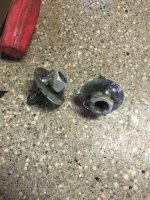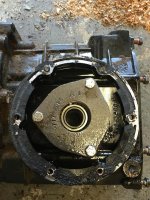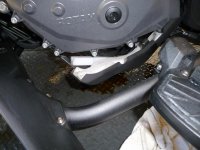Wildrice
New member
I'm thinking whoever installed my oil drain plug used red loctite with an impact gun or a 4' breaker bar.
the trans plug was metric & came out as expected. I have stripped the treads on the main oil drain using 3 different sets of large Torq socket inserts. Currently I'm in the process of drilling the plug & using an "Easy Out" removal bit.
Has anyone else ran across this problem & how did you solve it?:banghead::banghead::banghead: Tried to hammer the plug loose--no deal. I was considering using a butane portable torch to try to loosen up the recessed oil drain plug but didn't want to risk a fire with the oil.:yikes:
Anyone with a similar problem & resolution :bowdown:---I have the Gold oil plugs for replacement of stock plugs.
Darrell
the trans plug was metric & came out as expected. I have stripped the treads on the main oil drain using 3 different sets of large Torq socket inserts. Currently I'm in the process of drilling the plug & using an "Easy Out" removal bit.
Has anyone else ran across this problem & how did you solve it?:banghead::banghead::banghead: Tried to hammer the plug loose--no deal. I was considering using a butane portable torch to try to loosen up the recessed oil drain plug but didn't want to risk a fire with the oil.:yikes:
Anyone with a similar problem & resolution :bowdown:---I have the Gold oil plugs for replacement of stock plugs.
Darrell



